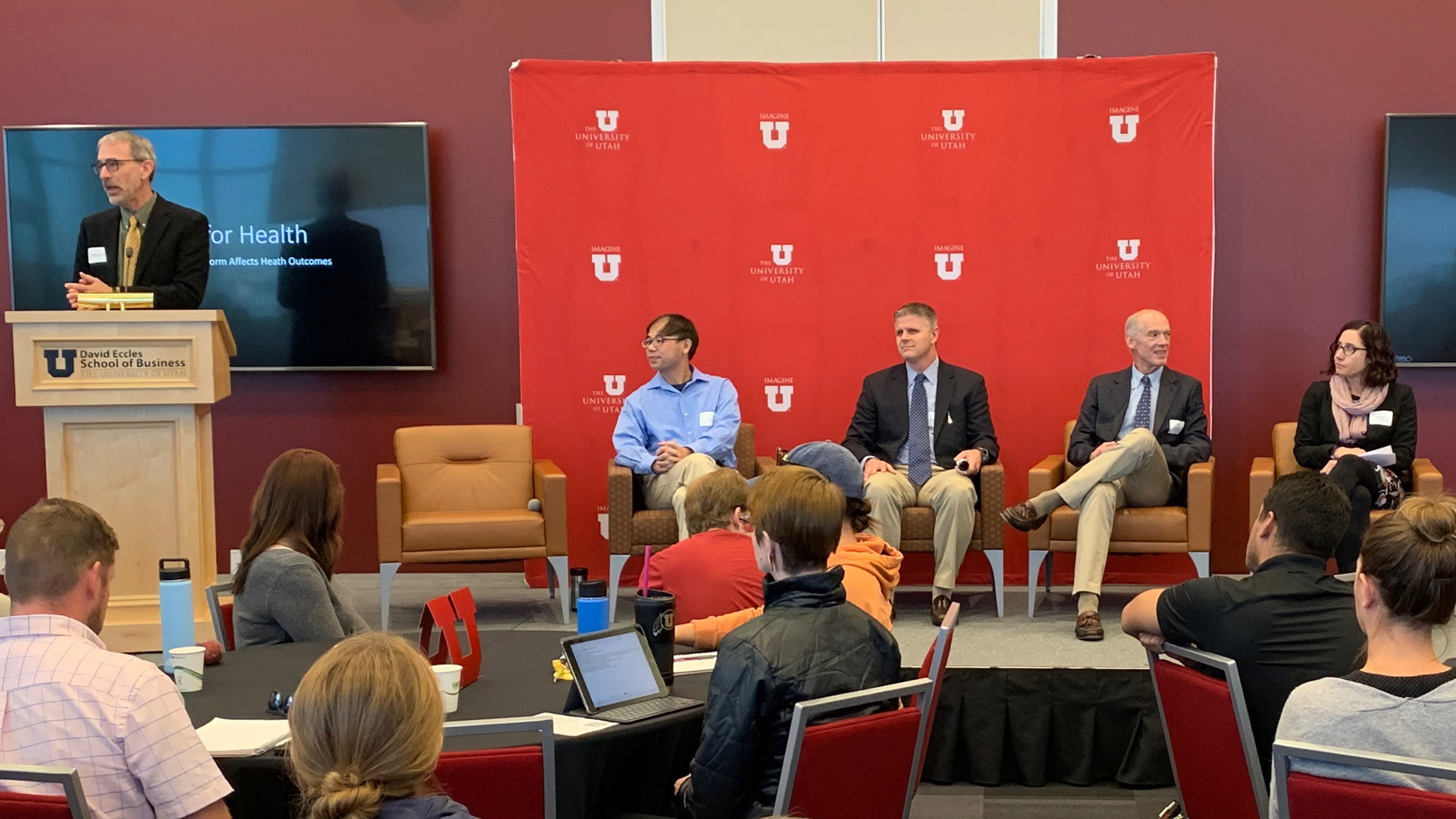
This is one in a series of stories about a clean air symposium held at the University of Utah on Oct. 3, 2019.The article was written by University of Utah Communications and published in @theu November 13, 2019.
Here’s what Keith Bartholomew tells his students: When it comes to Utah’s air pollution, it’s your job to be simultaneously Chicken Little and Pollyanna.
That mixture of alarm and hopefulness about the future of Utah’s dirty air was clear at the recent symposium “The Air We Breathe,” at the University of Utah. The daylong event focused both on dire data and the need for collaboration between scientists, planners, academics and health professionals.
One of the realities about air pollution is that scientists still don’t understand the complex chemistry of smog, nor the complex mechanisms that lead from pollutants to disease. The flip side is that Utah provides unique “exposure opportunities” to measure those pollutants and study the people affected by it, noted participants in a Scientific Cooperation panel moderated by Diane Pataki, associate vice president for research and professor of biology.
The bad news: “If you live in a place where air quality is worse, your mortality is higher,” said Rob Paine, pulmonary and critical care specialist in the U’s School of Medicine, citing the Harvard School of Public Health’s Six Cities study. “We’ve looked at it a gazillion different ways, and the data is solid.”
Air pollution impacts disease in multiple organ systems—not just the lungs (lung cancer, COPD, asthma) but also bone metabolism, vascular disease, diabetes and depression. “Some seminal work from this valley has shown if you increase PM 2.5 levels by about 10 micrograms per liter, it increases the rate of heart attacks by about 4%,” Paine said. But how pollutants target organ systems beyond the lungs is still a mystery.
To effect change in public behaviors and public policy about air quality, the message should come back, always, to health, he added. “Stick with the simple, hard truths. And say it over and over again.”
Christopher Reilly, associate professor of pharmacology and toxicology, reported that his department has received two NIEHS grants that will focus on understanding the mechanisms that lead from dirty air to damaged health.
Most of the pollution in the Salt Lake Valley is created “secondarily,” after emissions enter the atmosphere, although the chemistry is still not understood, said Jon Lin, professor in the U’s Department of Atmospheric Sciences.
The hopeful news: At the national level, average air quality has gotten better, in large part because of the Clean Air Act. “It shows there is action you can take to improve air quality,” Lin noted.
At the macro and micro level, improvements to city planning and building construction can make a difference too, said Bartholomew, associate professor in the Department of City and Metropolitan Planning.
“Transportation is now the single largest sector of the economy leading to air quality problems,” he noted. On the macro level, increased housing density leads to a decrease in car use. On the micro-level, sheltered bus stops instead of the “pole in the puddle model” have led to twice the number of riders compared to a control group.
The U’s scientists need to work together to solve Utah’s bad air, the panel agreed, rather than working in their individual silos. “Gatherings like this,” said Reilly, “need to be a lot more frequent.”
